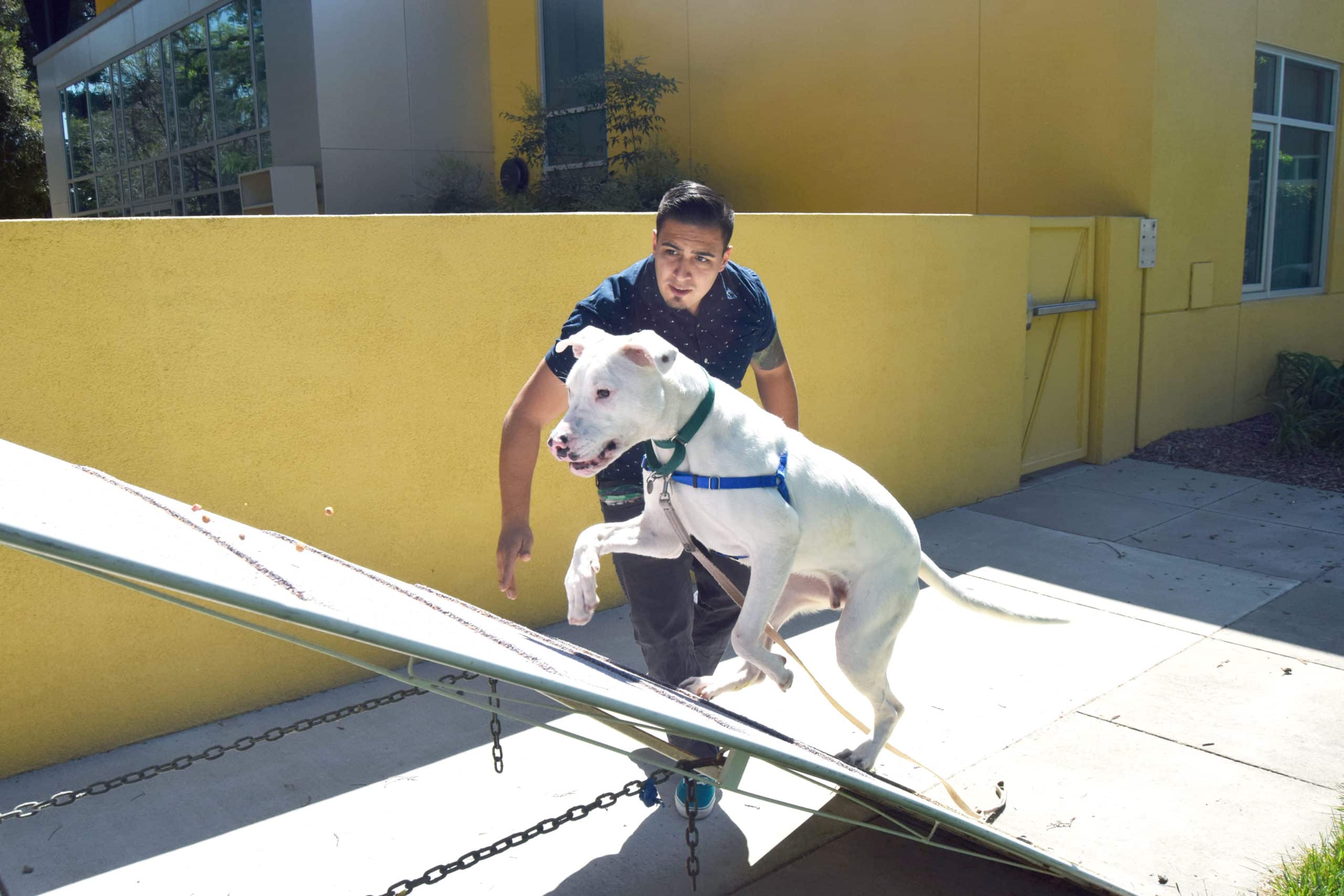Keep Your Pets Safe All Winter Long

If you are lucky to live in the Bay Area, most of your weather is manageable for your pets. However, there are a few points throughout the year that you may need to re-assess how you’re keeping your pets to better ensure their health and safety. The best strategy during cold or wet weather months is to keep pets indoors. You should also be considerate if you are traveling to cooler areas where dogs might not be used to the local weather conditions.
Below are a few tips to help you assess what might work best for your pet.
- Keep yourself aware of your area’s weather warnings. If there are frost warnings for your garden, consider those warnings for your pet, too. Being aware of the weather allows for you to better plan ahead.
- It is recommended that you bring your pets indoors when there are heavy wind or storm warnings. Strong winds have a higher likelihood of loosening up a fence board, knocking open the gate latch, or even downing a portion of your fence. If your pet is indoors, they are far more likely to stay home.
- Loud storms can scare our pets into hiding or attempting to get away to seek safety. This might lead to pets getting stuck in small spaces or injured in attempts to escape the yard.
- Consider preparing a back-up housing option when there will be storms. It’s best to begin acclimating your pet to such a space before you need it, so that using the space becomes less stressful for everyone. Cats especially may need time to adjust to being indoors and would do best if they could be introduced to such a space for short periods of time prior to you needing to leave for work.
- If you must leave your pet outdoors, be sure to create adequate shelter space to keep them warm and dry.
- When the temperature drops, chilly kitties will look for any warm place to curl up. This includes under the hoods of cars where they can be seriously injured or killed when the car starts. A trick to evict stowaways is to bang on the hood of your car loudly a few times before you enter. Any slumbering felines will be frightened by the noise and escape before you start your car.
- You should never leave your pet unattended in a car on a cold day. The winter weather turns your car into a rolling refrigerator — great for keeping your groceries chilled, but terrible for keeping your pet safe. If it’s cold outside, leave your animals warm and safe at home.
- When coming in from a winter walk or play session, dry your pet off thoroughly, and take extra care to wipe their legs, paws, and stomach. Pets in snowy climates can pick up salt, antifreeze, or other dangerous chemicals on their pads and lick them off, which could make them very sick.
Creating Emergency Confinement
If your pet is used to spending the majority of time outdoors but the weather will make it unsafe to do so, consider creating an indoor space. You can get as creative as you need to for this, utilizing any space that you might have.
- The easiest choice would likely be a crate. Wire crates can fold up for easy storage when not in use. They are also efficient for both dog and cat housing. Plastic crates can be a bit better insulated and do the trick. You may want to use a larger crate to house your cat so that you can provide a litter box as well as bedding.
- Your garage may be the easiest space to make a quick conversion. Just make sure any and all toxic items are secured safely out of reach. Even if it isn’t insulated, it will provide a wind break and a dry floor.
- A laundry room, large pantry, or walk-in closet could also be used. Again, be sure to proof the space. You’ll want to make sure there is a designated and enticing resting space. If you’ll be housing a cat, you’ll want to provide a litter box. Even if your cat has never used one, they are likely to take advantage of the option. Utilizing a baby gate, or even stacking two together may create for better air flow, more light, and less stress for your pet.
- You can also create a makeshift space by utilizing exercise or play pens, or arranging furniture to create a contained space. Healthy adult pets will likely be able to escape such a space unless they are significantly tall enough.
Outdoor Options
- Young, senior, or immune compromised pets should not be left outdoors in inclement weather as they are more susceptible to illness. While housing indoors is always the best option, there are some adjustments that can be made to create a safe, warm, and dry space outdoors.
- When creating an outdoor space to house your pets, you want to make sure that the space is covered on all sides and well insulated to help protect them from the elements
- Bedding should be provided and raised up off of the floor to be kept dry. You can create a raised bed using a pet cot, a wood pallet, or even a few 2’x4’s. Be sure to check daily that the bedding is dry and replace wet bedding immediately.
- You’ll also want to be sure that their water is not frozen. This may mean keeping their water bowl in their shelter or utilizing a plastic bowl rather than a stainless bowl. Many pet supply stores (or feed stores) also sell water bowls specifically designed to prevent freezing.
- Looking for more safe outdoor housing ideas: Do some research or catios, enclosed patio spaces designed for cats, and dog runs online. There are lots of amazing DIY options out there.
Harsh Weather Potty Tips
Many pets avoid going outdoors in inclement weather, and we don’t blame them! Your pet may need a little support and encouragement to continue to use the great outdoors as their designated potty space. Below are some options to help them stay on track.
- If your potty routine has you going out for walks, help keep them comfortable while they do their business by holding an umbrella over them or having them wear a doggy jacket or raincoat. If they seem mostly concerned about wet toes, try out some booties!
- For seasonal solutions you may want to create a more resistant and longer use option. Consider creating an overhang with a water resistant tarp if your yard does not offer any relief from rainfall. You could also strategically place a large patio umbrella, though this may not hold up in high wind.
- If your pet is beginning to have accidents inside, it may be best to return to confinement practice and create a more welcoming outdoor potty space. Your dog may be feeling like the outdoors are not an encouraging space to go and that eliminating inside is far more preferential to avoid going out in the weather.
- You may even want to create and encouraging space closer to your exit, if your dog isn’t comfortable walking all the way into the yard, they may be willing to jump out into a small covered space – for instance, a kiddie pool with woodchips under a patio umbrella or overhang.
- Try walking outside with your dog to encourage them that it is safe to do so, once the job is done, hurry back inside to dry off those toes and earn a cookie!



